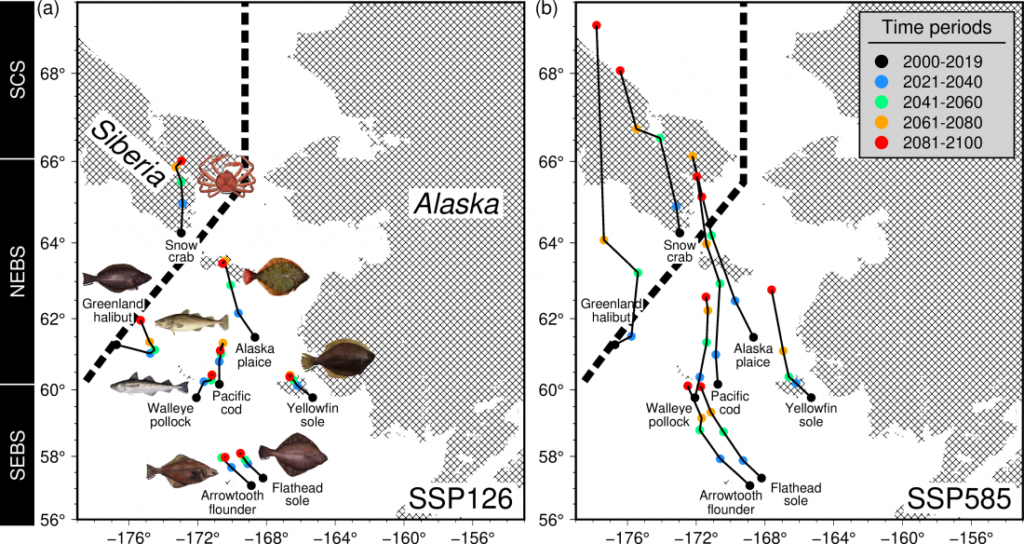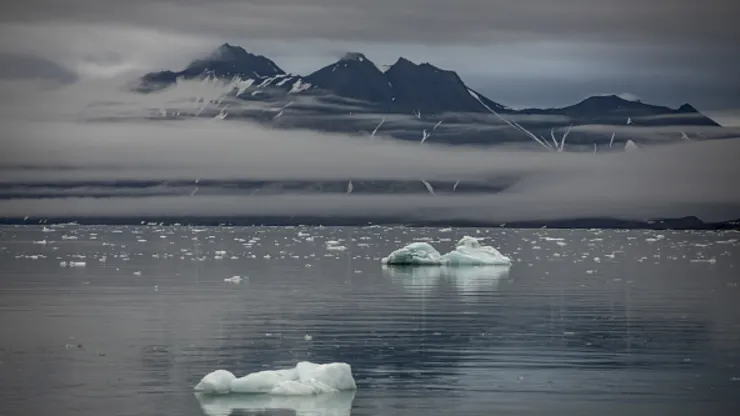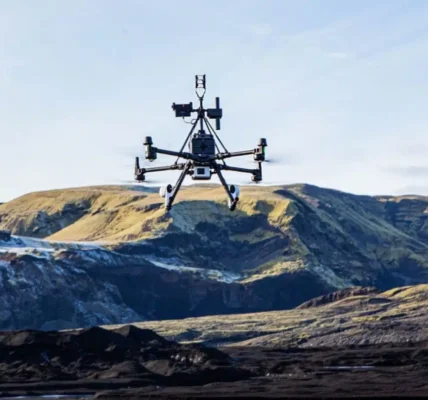Commercially important marine fish and invertebrate species will likely shift northwards under a warmer climate.

Trajectories of the abundance-weighted center of gravity (COG) for eight commercial species from modeled abundance from the present (2000-2019) to future periods (2021-2100) under the (a) SSP126 and (b) SSP585 climate scenarios. Overlain on the maps are the land masses (hachures) for reference and the US-Russia exclusive economic zone (EEZ) boundary (dashed line). Species photo credits (https://www.fisheries.noaa.gov/species/). (Irene D. Alabia, et al. PLOS ONE. June 06, 2024)
Marine fisheries are an essential source of protein for a large part of the world’s population, as well as supporting around 390 million livelihoods and an industry worth approximately US$ 141 billion, according to the UN FAO. Yet, climate change presents a major threat to the world’s fisheries, particularly in the Pacific Arctic. The eastern Bering Sea and Chukchi Sea—which contain eight of the most productive fisheries in the world—are already experiencing significant climatic shifts that have contributed to the surprise collapse of two important species, snow crab and Pacific cod.
To better understand the potential impact of climate change on fisheries in the region, a research team from Hokkaido University, The University of Tokyo, and the National Institute of Polar Research used bioeconomic modeling to study how the abundance and distribution of eight commercially important marine fish and invertebrate species might change under a range of climate scenarios from 2021-2100. The study was published in the journal PLOS ONE.
“The movement of fish stocks or populations out of their traditional fishing grounds can be challenging for resource managers and stakeholders, exacerbating the risks of overexploitation and the race to fish,” says Irene D. Alabia, a climate change researcher at the Arctic Research Center at Hokkaido University in Japan.
The researchers’ model includes biological parameters, such as population growth rate and fishing mortality rate, and economic parameters, such as the costs and income associated with each species’ fishery. The team modeled four climate-based socioeconomic pathway scenarios: sustainable development, middle of the road, regional rivalry and fossil-fuelled development.

The averaged maximum catch potential (MCP) within the US Exclusive Economic Zone (EEZ) computed at each 100-km buffer zone from the Dutch Harbor (left) and Port of Nome (right) for the present (2000-2019) and future periods (2021-2100) under SSP585. (Irene D. Alabia, et al. PLOS ONE. June 06, 2024)
The analysis suggested that under low to moderate levels of climate change, well-managed marine ecosystems may experience only limited economic impacts between now and 2040. However, more extreme warming, including the loss of sea ice, would have more severe impacts.
All the climate scenarios pointed to a shift northward for all of the species studied due to the loss of sea ice habitat and warmer water temperatures in the eastern Bering Sea. The most significant shift in abundance was predicted for Greenland halibut, with the fishery’s center of gravity forecast to move by more than 80 kilometers per decade under the highest impact climate scenario. In contrast, the walleye pollock fishery was projected to shift around 30 kilometers per decade.
Even in the most extreme climate scenario, the news wasn’t all bad. The abundance of Pacific cod was forecast to increase, but the high-value snow crab was forecast to decrease.
“The magnitude of abundance changes varied across species, identifying potential winners and losers under climate change and hinting at the potential restructuring of future marine communities in the Pacific Arctic region,” Alabia said.
The researchers stressed the importance of climate-smart solutions to protect and preserve marine fisheries in order to support food security and ensure a sustainable fishery sector under climate change.

(From left) Irene D. Alabia, Jorge García Molinos, Takafumi Hirata, Daiju Narita, and Toru Hirawake of the research team. (Photos: Aprilia Agatha Gunawan, Manami Kawamoto, Takafumi Hirata, Daiju Narita, Toru Hirawake)





In the quiet dance of nature, we see how climate change is reshaping vital fisheries in the Pacific Arctic. This transformation invites us to reflect on our interconnectedness with marine life and inspires a collective commitment to stewardship and harmony with our environment.
As we contemplate the intricate balance of our ecosystems, it’s essential to recognize how climate change is gently nudging the delicate web of life in the Pacific Arctic. These shifts in fisheries remind us that every action has a ripple effect, urging us to embrace sustainable practices for the health of our oceans.
The potential shifts in Pacific Arctic fisheries due to climate change highlight the urgent need for innovative approaches in our careers. Professionals in marine biology and environmental science must collaborate to develop adaptive management practices that can mitigate these impacts.
For professionals focused on marine resources, the changes in Pacific Arctic fisheries due to climate change present both challenges and opportunities. It’s time to enhance our skill sets and engage with stakeholders to ensure sustainable outcomes for future generations.
🌊 The future of our Pacific Arctic fisheries is at a crossroads! As climate change continues to reshape our oceans, it’s crucial to stay ahead of the curve. Investing in sustainable fishing practices now can ensure that these vital resources remain abundant for generations to come. Let’s protect our fisheries together! 💪 #SustainableFishing
This is a wake-up call for all stakeholders! By investing in eco-friendly technologies and responsible fishing methods, we can adapt to these changes and secure a thriving fishery industry for the future. Act now for a sustainable tomorrow! 📈 #FishForTheFuture
In this age of transformation, our vital Pacific fisheries are at a crossroads—a tale of resilience and adaptation unfolds beneath the waves. Let’s dive deep into creative strategies that ensure these aquatic treasures thrive amidst changing tides!